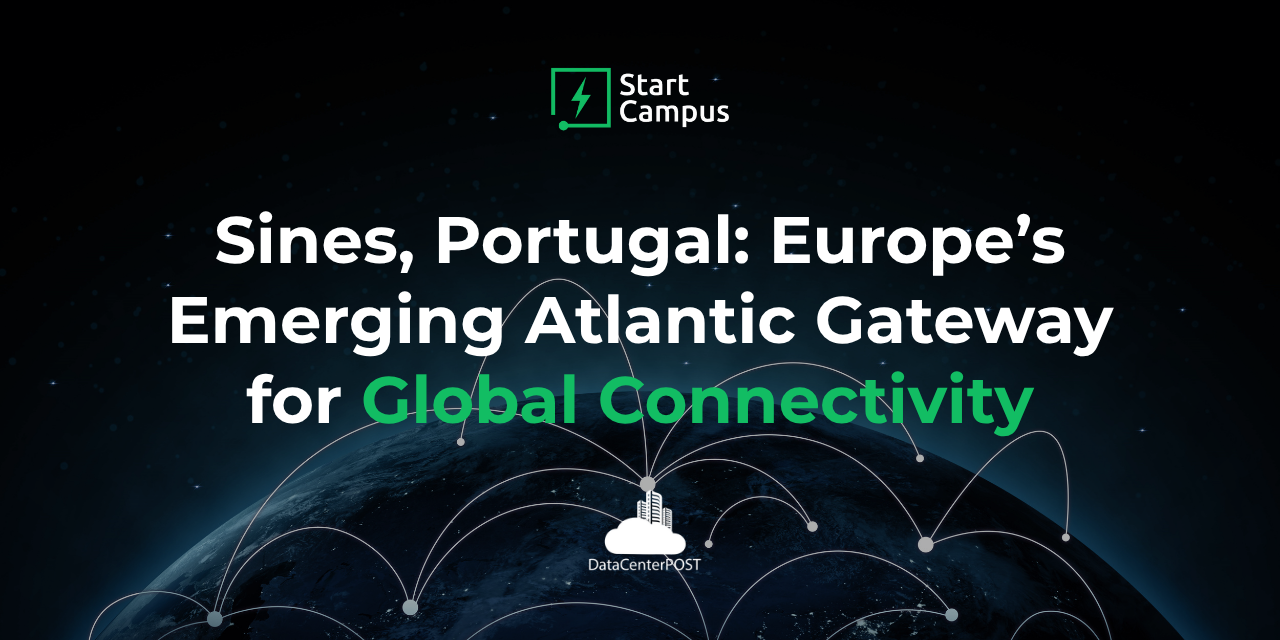Originally posted on Start Campus.
As Europe rethinks its role in the global digital and energy landscape, one location is rapidly gaining strategic importance: Sines, Portugal.
Positioned at the southwestern edge of Europe—with a deep-water port and direct maritime access to the Americas and Africa—Sines is evolving into a digital and connectivity hub of transatlantic significance. With cutting-edge subsea cable projects, green-powered hyperscale infrastructure, and strong public-private collaboration, Sines is no longer just a point on the map. It’s the Atlantic gateway to Europe’s digital future.
The Atlantic Advantage: Why Sines Matters Now
Sines offers unmatched geographic advantages as a European landing point for the next generation of subsea cables. It is one of the shortest, lowest-latency routes between Europe and:
- South America, via the EllaLink cable connecting Sines to Brazil
- Africa, through systems like Equiano (Google’s subsea cable to South Africa) and the upcoming Medusa cable
- North America, via new transatlantic systems currently in planning
With Sines acting as a neutral, carrier-friendly location, these investments are establishing resilient, high-capacity routes that diversify Europe’s digital backbone—moving beyond traditional hubs in northern Europe.
From Port City to Pan-European Infrastructure Hub
Beyond its geography, Sines has become the centerpiece of a bold, long-term vision to modernize Europe’s digital and energy infrastructure. A new wave of projects—anchored by initiatives like the Atlantic Hub (a collaboration between aicep Global Parques, EllaLink, and Start Campus)—is turning Sines into a secure and sustainable landing zone for subsea cables, network interconnection, and cloud infrastructure.
Start Campus is leading the charge with the SINES Project, a 1.2 GW hyperscale data center campus powered by 100% green energy. Designed with efficiency, sustainability, and global reach in mind, the campus will be directly integrated into the region’s fast-growing cable ecosystem—offering ultra-low latency connections across three continents.
To continue reading, please click here.


